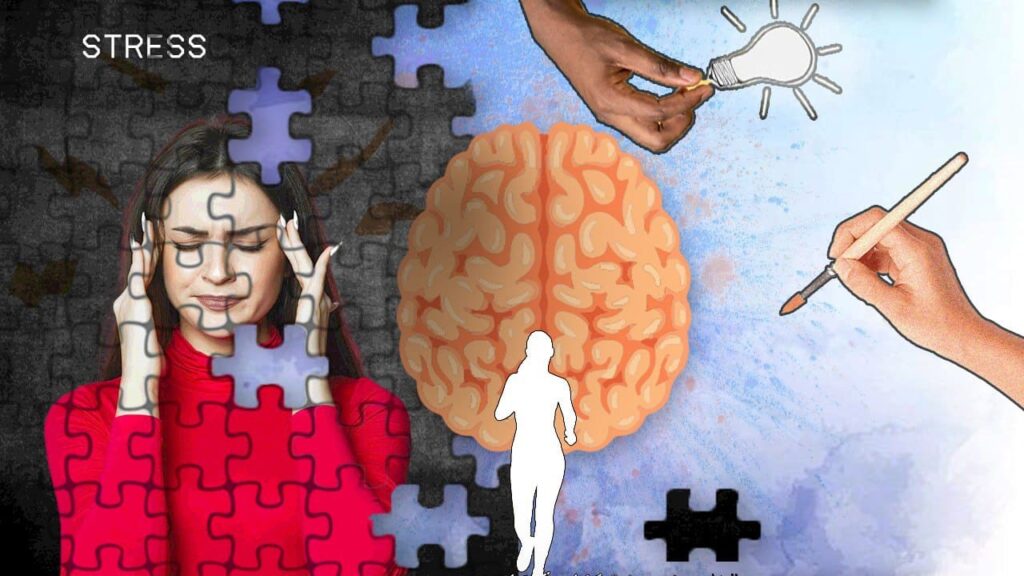Advertisement

- Updated on May 14, 2025
- IST 12:53 pm
“Gen Z’s new obsession? Walking alone. Doctors say it’s better than therapy.”
Imagine stepping outside, leaving your phone behind, and just walking—no music, no podcasts, just you and your thoughts. Sounds simple, right? Yet, this uncomplicated act, known as quiet walking, is taking India by storm, especially among Gen Z. In a country where mental health struggles like anxiety and depression are surging—over 56 million Indians battle depression, and 38 million face anxiety disorders, according to the World Health Organization—this trend is more than a fad; it’s a lifeline. From the chaotic streets of Mumbai to the serene parks of Bengaluru, people are discovering that solitary walks without distractions can ease their minds and spark creativity. Doctors are even calling it a game-changer, sometimes better than therapy. So, what’s behind this movement, and why is it resonating with Indians aged 15 to 45? Let’s take a stroll through the hows and whys of quiet walking and explore how it’s helping fix India’s mental health crisis, one step at a time.
What is Quiet Walking?
Quiet walking isn’t your typical evening stroll or a brisk jog with your favorite playlist. It’s a mindful practice where you walk alone, free from gadgets—no earbuds blaring Bollywood hits, no phone buzzing with notifications. It’s about being fully present, tuning into the world around you: the chirping of birds, the rustle of leaves, or even the distant hum of traffic. In a nation where life often feels like a non-stop race—think crowded trains, relentless work pressures, and the constant ping of social media—quiet walking offers a rare pause.
For many Indians, carving out this silence can feel revolutionary. We’re a culture that thrives on connection, from family gatherings to WhatsApp groups that never sleep. Yet, quiet walking flips the script, encouraging solitude as a strength. It’s not about isolation; it’s about reconnection—with yourself. Whether you’re pacing a quiet lane in Delhi or circling a temple courtyard in Chennai, it’s a chance to let your mind breathe.

The Science Behind Quiet Walking
Why does something as basic as walking alone work wonders? The science backs it up. Walking itself is a proven mood-lifter—studies show it can cut anxiety and depression symptoms, boost memory, and sharpen focus. A University of Illinois study found that just 20 minutes of walking improves attention span. But add the quiet factor, and you’ve got a superpower.
When you ditch distractions, your brain slips into a state of relaxed attention, much like meditation. A study in the Journal of Environmental Psychology revealed that people who walked in silence had fewer negative thoughts and less rumination compared to those plugged into music or podcasts. Another gem from Stanford University: walking can boost creative output by 60%. Less noise, more ideas—it’s that simple.
Dr. Meera Patel, a Mumbai-based psychologist, puts it plainly: “Quiet walking lowers cortisol, the stress hormone, while boosting serotonin and dopamine, the feel-good chemicals. It’s a natural reset for an overstimulated mind.” In India, where mental health resources are thin—only 0.3 psychiatrists per 100,000 people, per the National Institute of Mental Health and Neurosciences—this free, accessible practice is a big deal.

Quiet Walking and Mental Health
India’s mental health crisis is no secret. A recent Indian Psychiatric Society survey found that over 40% of young adults grapple with significant anxiety—students juggling exams, professionals chasing deadlines, all under the relentless glare of social media. Quiet walking steps in as a gentle warrior against this tide.
Take Aisha, a 22-year-old from Delhi. Drowning in exam stress, she started walking alone in Lodhi Garden every evening. “I’d always have my headphones on, but one day I forgot them,” she recalls. “It felt weird at first, but I kept going. Now, I sleep better, and my mind doesn’t feel like it’s racing all the time.” That’s the magic: by focusing on your steps or the breeze, you break the loop of anxious thoughts.
Mindfulness is the secret sauce here. A JAMA Internal Medicine meta-analysis showed mindfulness practices can slash anxiety and depression symptoms by up to 30%. Quiet walking delivers this on a platter—no meditation cushion required. For those hesitant to seek therapy due to cost or stigma, it’s a private escape, a way to reclaim calm without judgment.

Boosting Creativity Through Solitude
Ever notice how your best ideas hit you in the shower or during a random daydream? Quiet walking taps into that same sweet spot. Without distractions, your mind wanders freely, stitching together thoughts in unexpected ways. It’s called “incubation”—a fancy term for letting your brain cook up brilliance in the background.
History’s full of walkers who swear by it. Steve Jobs held walking meetings to brainstorm. Virginia Woolf roamed London streets for inspiration. In India, where innovation drives everything from startups to Bollywood scripts, quiet walking could be your creative edge. Rohan, a 26-year-old graphic designer from Mumbai, agrees: “I hit a wall with a project, so I walked along Marine Drive—no phone, just me. Halfway through, the idea clicked. Now it’s my go-to.”
For a generation facing pressure to innovate, this solitude is gold. Whether you’re a student sketching a novel or an entrepreneur dreaming up a startup, a quiet walk might just unlock your next big thing.

How to Practice Quiet Walking
Ready to try it? Here’s your starter kit:
- Pick Your Spot: Find a quiet corner—a park, a rooftop, or even a temple path. Early mornings or late evenings work best when the world’s hushed.
- Ditch the Tech: Leave your phone behind (tough, we know!). If you must carry it, silence it and tuck it away.
- Set an Intention: Before you start, take a breath. Maybe it’s “I need calm” or “I’m open to ideas.”
- Tune In: Notice the crunch of gravel, the scent of jasmine, the rhythm of your steps. Let your senses lead.
- Let Thoughts Flow: Don’t force your mind to hush. Let it wander—solutions often sneak up when you’re not looking.
- Start Small: Try 10-15 minutes, then build to 30 as you get the hang of it.
- Stay Consistent: Even once a week builds benefits over time.
In cities like Bangalore or Kolkata, try Cubbon Park or the Maidan. Rural folks, a village trail works wonders. Safety tip: stick to well-lit, populated spots, especially if you’re walking alone at dusk.
Challenges and How to Overcome Them
It’s not all smooth strides—quiet walking has its hurdles:
- Time Crunch: Between work and family, who’s got 30 minutes? Fix: Walk to the market or during lunch—sneak it in.
- Boredom: No music? Yawn. Fix: Lean into it. Boredom often sparks creativity. Focus on details around you.
- Safety: Solo walks can feel risky, especially for women. Fix: Choose busy parks or tell a friend your route.
- Distractions: Thoughts spiral to tomorrow’s to-do list. Fix: Gently refocus on what you see or hear.
- Weather: Monsoons or summer heat can derail you. Fix: Walk early or find indoor spots like malls (sans shopping!).
These aren’t roadblocks; they’re stepping stones. Plan ahead, and you’ll keep going.
Conclusion: Step Into a Better You
In a world that’s always “on,” quiet walking is a radical act of switching off. It’s free, simple, and powerful—easing anxiety, igniting creativity, and offering a break from India’s mental health storm. For Gen Z and beyond, aged 15 to 45, it’s not just a trend; it’s a tool to thrive.
So, why wait? Grab your shoes, step out, and walk. No playlist, no pressure—just you. Feel your worries fade with each step. Doctors might be onto something—maybe this is better than therapy.
Tried it? Loved it? Hated it? Drop your story in the comments. Let’s inspire each other to keep walking, one quiet step at a time.
You May Like This
Advertisement

You May Like This








Advertisement

Advertisement

Advertisement





